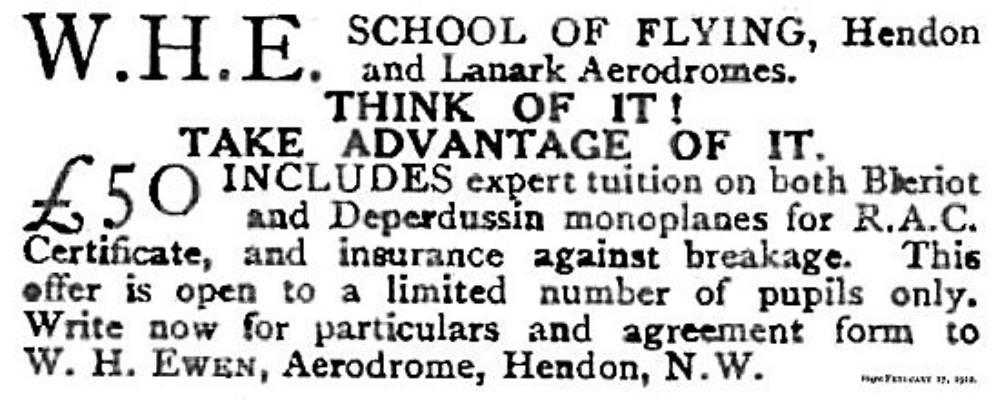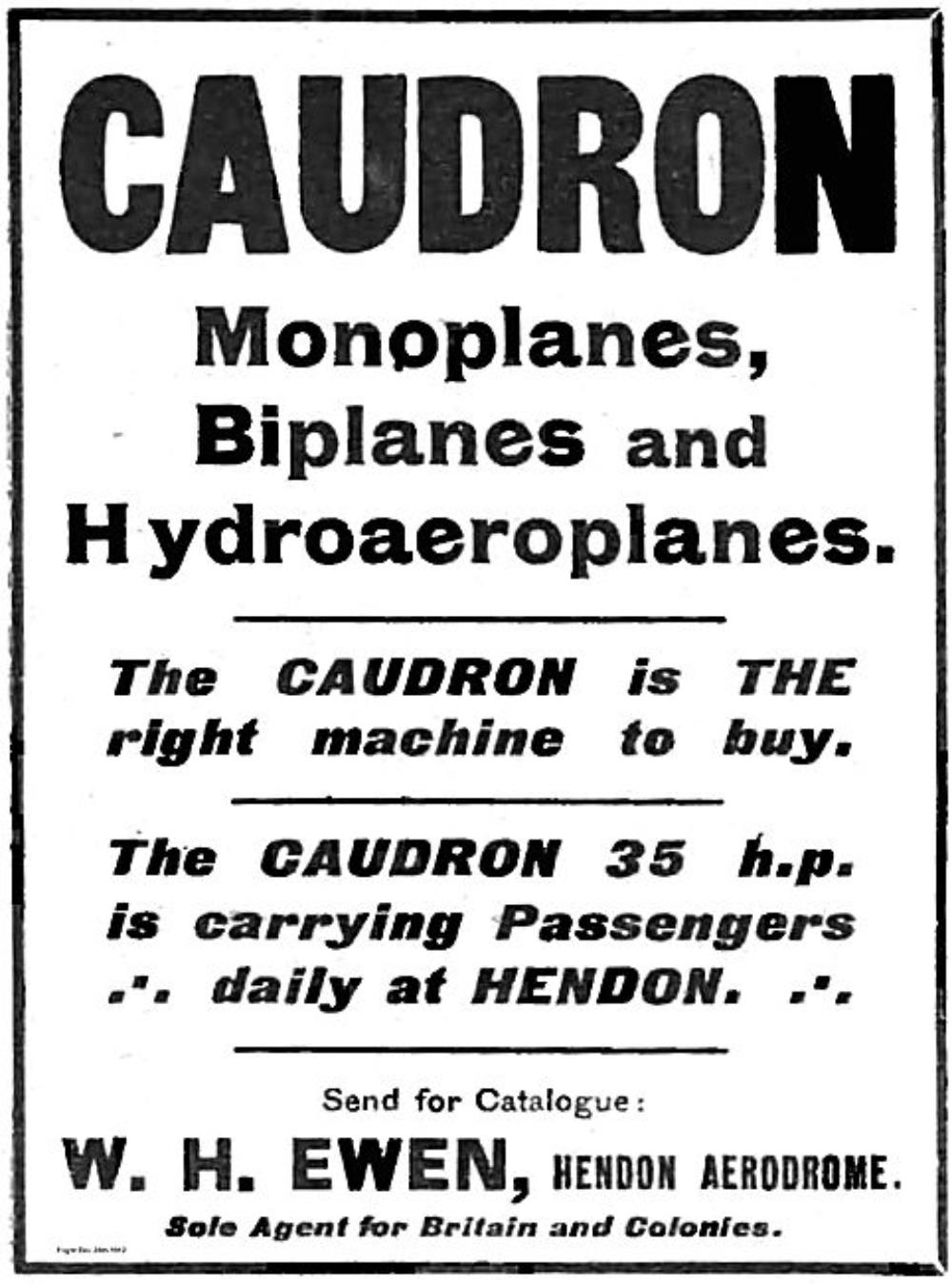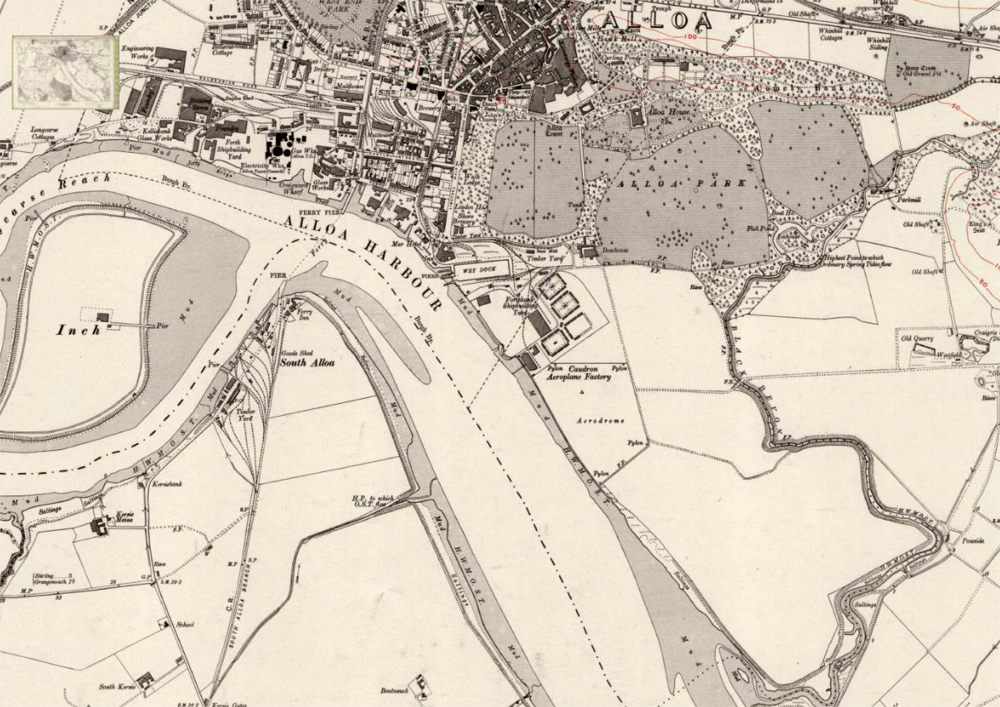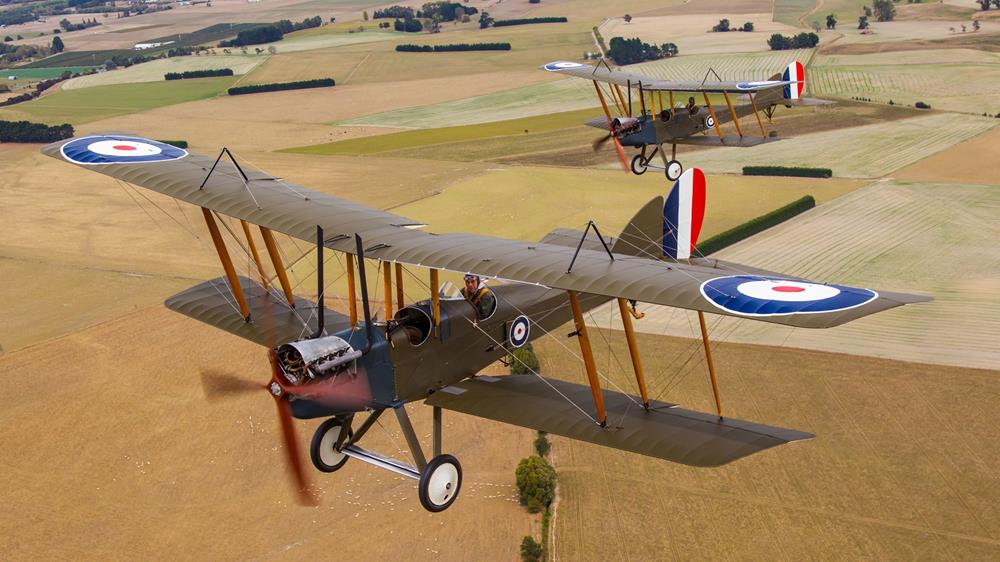The Caudron Aeroplane Factory and Aerodrome at Alloa
< Back to Military Aviation round the forth
Background
Before WWI, Britain was lagging in the development and production of aircraft. Aeroplanes were bought from French manufacturers – Henry and Maurice Farman, Bleriot, Deperdussin, Borel. In 1913, the Royal Aircraft factory was given permission to design British aircraft. These designs were then built at factories throughout the UK, including The Caudron Aeroplane Factory and Aerodrome at Alloa owned by W.H. Ewen.
W.H. Ewen becomes teh UK agnet for Caudron
In 1912 W.H. Ewen the Scottish aviator was offering flying lessons at Hendon and Lanark.

He also became the UK agent for the French company Caudron . . .

. . . and in 1915 founded an aeroplane factory with an adjacent aerodrome, next to Alloa harbour on the banks of the Forth. This company was originally known as the W H Ewen Aviation Company, before it became the British Caudron Company a subsidiary of the French aircraft manufacturer. British Caudron manufactured 50 Royal Aircraft Factory B.E.2s and 100 Sopwith Camels under licence.

The Cauldron Aeroplane Factory and aerodrome on a 1924 OS map.
The Royal Aircraft Factory B.E.2

The Royal Aircraft Factory B.E.2 (Blériot Experimental) was a British single-engine two-seat biplane in service with the Royal Flying Corps during World War I. About 3,500 were built by over 20 different manufacturers used as fighters, interceptors, light bombers, trainers and reconnaissance aircraft.
Note: All Royal Aircraft Factory designs were given one of six designations
B.E. (Blériot Experimental) – General purpose tractor biplanes (i.e. propeller at the front, pulling the aeroplane)
R.E. (Reconnaissance Experimental) – Reconnaissance tractor biplanes
B.S. (Blériot Scout) – Single-seat tractor scouts
F.E. (Farman Experimental) – Pusher biplanes (i.e. propeller at the rear, pushing the aeroplane)
S.E. (Santos Experimental) – Canard biplanes (“tail-plane” at the front)
T.E. (Tatin Experimentan) – Pusher Monoplanes with the propeller at the very rear, behind the tail
These classifications were named after the pioneers who had first made them famous, and didn’t indicate any direct connection between that aircraft and its namesake. The F.E.1, or Farman Experimental 1, was designed by Geoffrey de Havilland, while the S.E.1 was the designation given to his ‘repaired’ Blériot XII
The B.E.2a of No.2 Squadron RFC was the first aircraft of the Royal Flying Corps to arrive in France after the start of the First World War, on 26 August 1914.
The B.E.2 was designed by Geoffrey de Havilland as a development of the B.E.1, with a more powerful 60-hp Renault V8 air-cooled engine and first flew on 1st February 1912 with de Havilland as the test pilot.
The early B.E.2a and b aircraft were replaced during 1915 by the B.E.2c, so extensively modified as to be virtually a new type, based on research by Edward Teshmaker Busk to develop an inherently stable aeroplane. The c began to be superseded by the final version, the B.E.2e, nicknamed the “Quirk”, in 1916.
Late into 1917 the last front-line B.E.2e was withdrawn, long after the type was obsolete. It continued in service throughout the war as a home defence fighter, in which role it was for a time a surprising success, and as a trainer.
Sopwith Camel

The Sopwith Camel was the most famous British fighter aeroplane of World War One. The Camel, so-called because of the hump-shaped protective covering over its machine guns, came into combat service in June 1917.
In the hands of an experienced pilot, the Sopwith Camel was more than a match for the German Albatros fighters. While it was not particularly fast (it had maximum speed of 115 mph), the strength of the Camel was its mobility and manoeuvrability when in the air. In the 17 months it was in service during World War One, the Camel was credited with 1,294 kills – an average of 76 kills a month.